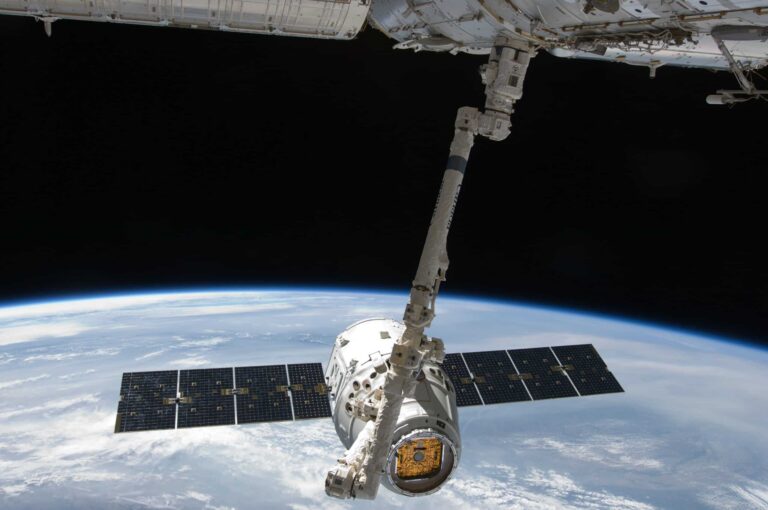The International Space Station (ISS) is an habitable and large artificial satellite that orbits the Earth. It was first launched in 1998 and has been continuously occupied by astronauts and cosmonauts from various countries.
The ISS is a cooperative project among five space agencies: the American NASA, the Russian Roscosmos, the Japanese JAXA, the European ESA, and the Canadian CSA.
The station serves as a unique platform for scientific research and technological demonstrations. Thus, it is also a testbed for developing and evaluating new technologies for future space missions.
Table of Contents
Why does humanity need the ISS
The ISS is an important tool for advancing our understanding of the universe and the Earth. In fact, the microgravity environment of the ISS provides a unique laboratory for conducting experiments in fields such as physics, biology, and materials science.
These experiments are helping us better understand the behavior of matter and life in space. This is critical to improving our ability to live and work in space in the future.
The ISS has among its missions the test of new technologies and systems critical for future human space missions. For example, the station has been used to test navigation technologies. Moreover, it has also been used to develop new durable materials resistant to the harsh conditions of space.
What are the purposes of the International Space Station
The International Space Station (ISS) serves a number of purposes, including scientific research, technological development, and international cooperation. Some of the main purposes of the ISS are as follows:
Scientific research
The ISS provides a unique environment for conducting experiments in microgravity, which cannot be possible on Earth. Researchers use the ISS to study microgravity effects on various fields, including biology, physics, and materials science.
Technology development
The ISS serves as a testbed for new technologies and systems. For example, the station has among its uses the test of new life support systems, propulsion systems, and navigation technologies. Furthermore, they have also been used to develop new materials that are more durable and resistant to the harsh conditions of space.
International cooperation
The ISS is a cooperative project among five space agencies: NASA, Roscosmos, JAXA, ESA, and CSA. These agencies promote international cooperation and collaboration by working together on the ISS. This is critical for advancing our understanding of the universe and improving our ability to live and work in space.
Inspiration and education
The ISS inspires people worldwide and educates and engages the next generation of scientists, engineers, and explorers. By highlighting the achievements of the ISS and the work of the astronauts and cosmonauts who live and work aboard the station, the ISS is helping to inspire and motivate young people to pursue careers in science, technology, engineering, and mathematics (STEM).
How is the ISS maintained
The International Space Station (ISS) requires regular maintenance and upkeep to ensure its continued operation. The maintenance of the ISS is a cooperative effort between the five space agencies. Some of the key elements of the ISS maintenance include:
Inspection and repair
The ISS goes through regular inspection to identify any potential problems or damage that may need reparation. Moreover, astronauts and cosmonauts perform routine maintenance tasks such as checking the station’s electrical and cooling systems. Furthermore, they also replace filters and inspect the exterior of the station for any signs of damage.
Upgrades and replacements
The ISS is continually being upgraded to improve its performance and capabilities. As an example, new modules and systems may be added to the station, or existing equipment may be replaced with newer, more advanced technology.
Supply missions
The ISS relies on regular supply missions to bring new equipment, supplies, and food to the station. These missions are critical for ensuring that the astronauts and cosmonauts have what they need to continue their work aboard the ISS.
Collaborative maintenance
The five partner space agencies work together to maintain the ISS, each providing its expertise and resources. For example, NASA provides expertise in life support systems and space suits, while Roscosmos provides expertise in propulsion and navigation systems.
Remote monitoring
The ISS is constantly monitored from the ground to ensure that it is operating efficently. Ground-based teams monitor the station’s systems and receive telemetry data from the ISS, which they use to identify any potential problems and plan repairs if necessary.
The ISS serves a number of important purposes
The International Space Station (ISS) is a unique and critical platform for advancing our understanding of the universe and improving our ability to live and work in space.
With its microgravity environment and advanced capabilities, the ISS serves a number of important purposes, including scientific research, technological development, international cooperation, and education.
The ISS is maintained through a collaborative effort among the five partner space agencies. This involves regular inspections, upgrades, supply missions, and remote monitoring. The ISS is an inspiring example of collaboration among nations to pursue shared goals.
Read also: The best free astronomy apps for stargazing












